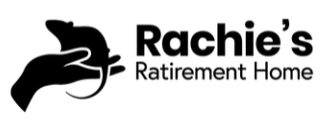Minimum Requirements for the Ethical Housing of Mice
This is a science-based checklist defining minimum requirements to house mice ethically. Please note that the checklist is an ABSOLUTE MINIMUM of what is reccomended in a lab setting, not a reccomendation, and the standard expected for pet owners is much higher. The guidelines are to provide an easy to read line in the sand for what is and isn't ethical treatment of mice, based not on personal opinion but on science and fact. TL;DR I'd never send an animal into a home or buy from a breeder that exactly fits this description, but it's a bar.
This is a science-based checklist defining minimum requirements to house mice ethically.
Mice don't just need food and water to experience a life that can be defined as humane, there are other vital welfare requirements that are recognised worldwide as being required by ALL animals no matter what their purpose. These are known as the Five Freedoms, and are as follows:
Freedom from hunger or thirst by ready access to fresh water and a diet to maintain full health and vigour
Freedom from discomfort by providing an appropriate environment including shelter and a comfortable resting area
Freedom from pain, injury or disease by prevention or rapid diagnosis and treatment
Freedom to express (most) normal behaviour by providing sufficient space, proper facilities and company of the animal's own kind
Freedom from fear and distress by ensuring conditions and treatment which avoid mental suffering
The guidelines below are adapted from a set of ethics requirements written based on decades of research into mice in labs. In it's original form, it is used to ensure that lab animals are housed ethically and that good animal welfare is maintained in all the vital aspects of animal care. The full guidelines are referenced at the end of this article, but the checklist can be considered an adaptation of the guidelines into an easy to follow checklist that can be used by breeders to ensure that their housing is meeting acceptable animal welfare standards. Please not that the checklist is an ABSOLUTE MINIMUM, not a reccomendation, and the standard expected for pet owners is much higher. The guidelines are to provide an easy to read line in the sand for what is and isn't ethical treatment of mice, based not on personal opinion but on science and fact.
Space:
Mice are not overcrowded and the cage space is sensible for the size of all individuals and the number of animals. (Enclosures should allow for a minimum floor area of 250cm2 (eg.10cmx25cm) for a single housed mouse, a minimum floor area of 500cm2 for two mice and ensuring a minimum floor area of 60cm2 per additional adult mouse when mice are housed in larger groups.)
Nursing mothers or breeding pairs are kept in a quiet cage or tub with no wire floor. (A breeding pair or female with pups requires a minimum total cage floor area of 500cm2 , with an additional 100cm2 for each additional adult female.
Cage design:
The height of cages is at a bare minimum 12cm high, allows mice to stand on their hind legs, stretch up fully, and facilitate climbing on the bars or mesh of the cage lid or roof.
The living area should be constructed and arranged in such a way to allow mice to compartmentalise their space, so that different areas can be used for urination, defecation, eating and resting.
Larger cages are designed to avoid large open spaces.
The cage or tub must have solid floors, as opposed to wire or mesh.
Food and water is available at all times and accessible at a level that allows mice to assume comfortable positions while eating and drinking.
Where a water delivery system is used, an elevated platform such as the top of a hide should be accessible to avoid water in case of flooding.
The ambient temperature is kept at a safe level both day and night and the mice are not in direct sunlight.
It should be noted that although a night/day cycle of light is beneficial, mice are light aversive and are more comfortable in dimmer, shaded areas. For most pigmented strains they are most comfortable below 60lux and for albino strains it is below 25lux. (For context, bright sunlight is 111,000lux an overcast day is 1000-2000lux.)
Cages should be cleaned regularly to prevent ammonia buildup (kept below 25 ppm), rates vary based on cage size and mouse numbers but as a guide, bedding is commonly replaced about once a week.
A relative humidity at the level of mouse cages of 40-70% is recommended as a guideline for optimal respiratory health and comfort.
Substrate:
Substrate should be provided in mouse cages and should be present in sufficient quantity to cover the entire floor. The depth of substrate required will vary with the type of substrate used, the number of mice in the cage and frequency of cleaning. Mice are able to dig and make burrows. The substrate is no less than 2cm deep at a minimum.
Ideally substrate should be free of dust, microbial, parasitic, or chemical contaminants, non-traumatic, moisture absorbent and ammonia binding. The properties of substrate provided should also include that its particles can be manipulated for nest building or food storing.
Vermiculite or other substrates with small particles should not be used where they can come into contact with the animals.
Nesting:
All mice including males should be provided with nesting material in addition to substrate, enough for all mice to nest comfortably in to regulate temperature for sleeping.
Nesting material should be non-toxic, non-irritant, atraumatic, loose, manipulable and light enough to be carried. Suitable materials include straw, shredded paper with non-toxic ink and tissues.
Mice should be provided with an in-cage shelter within their cage. Shelters should be provided in addition to, not as a substitute for, nesting material.
Cages or tubs are well ventilated but kept out of direct drafts.
There are sufficient enclosed, opaque shelters to allow all animals to simultaneously withdraw from light and activities outside their cage.
Enrichment and social requirements:
Pair housing of male mice is not recommended due to a high probability of aggression. If male mice are raised together and shown to cohabitate well, they can be kept in a colony. In this case, they should be monitored regularly and if mice are removed they should be returned within 48 hours to retain social memory.
Mice should be provided with items to enrich their environment. Items that assist mice to perform each of the following five categories of behaviours should be provided:
Social interaction
Chewing/gnawing (hides, food hoppers)
Locomotion (including climbing, exploring and playing),
Resting/hiding, and
Manipulating, carrying and hoarding food and objects. (Food hoppers, toys, nesting material.)
All housing for all animals allows the opportunity for social interaction (males excepted), the opportunity to carry out normal behaviours and the opportunity to rest and withdraw from each other, UNLESS there are medical or behavioural circumstances which requires different circumstances AND it is clear that measures have been taken to meet the behavioural and psychological needs of the animals as closely as possible.
Mice should not be housed individually unless there is compelling evidence for the need to house the individual in this way, ie male mice. In such cases, mice should be able to see, hear and smell other mice.
Where possible, mice should be kept away from the smell of predator species including rats. Care should be taken to wash hands between handling species to minimise distress.
Mice should be handled quietly and gently with the goal of minimising distress.
Article by Grover Greenfield on 04/11/2019
Image by Grover Greenfield
Originally published 04 Nov 2019
Bibliography:
Chave, L. (n.d.). Guidelines for the Housing of Rats in Scientific Institutions. [online] Animal Ethics Infolink. Available at: https://www.animalethics.org.au/__data/assets/pdf_file/0004/249898/Guide... [Accessed 4 Nov. 2019]
rspca.org.au. (2019). What are the Five Freedoms of animal welfare? – RSPCA Knowledgebase. [online] Available at: https://kb.rspca.org.au/knowledge-base/what-are-the-five-freedoms-of-ani... [Accessed 4 Nov. 2019].

